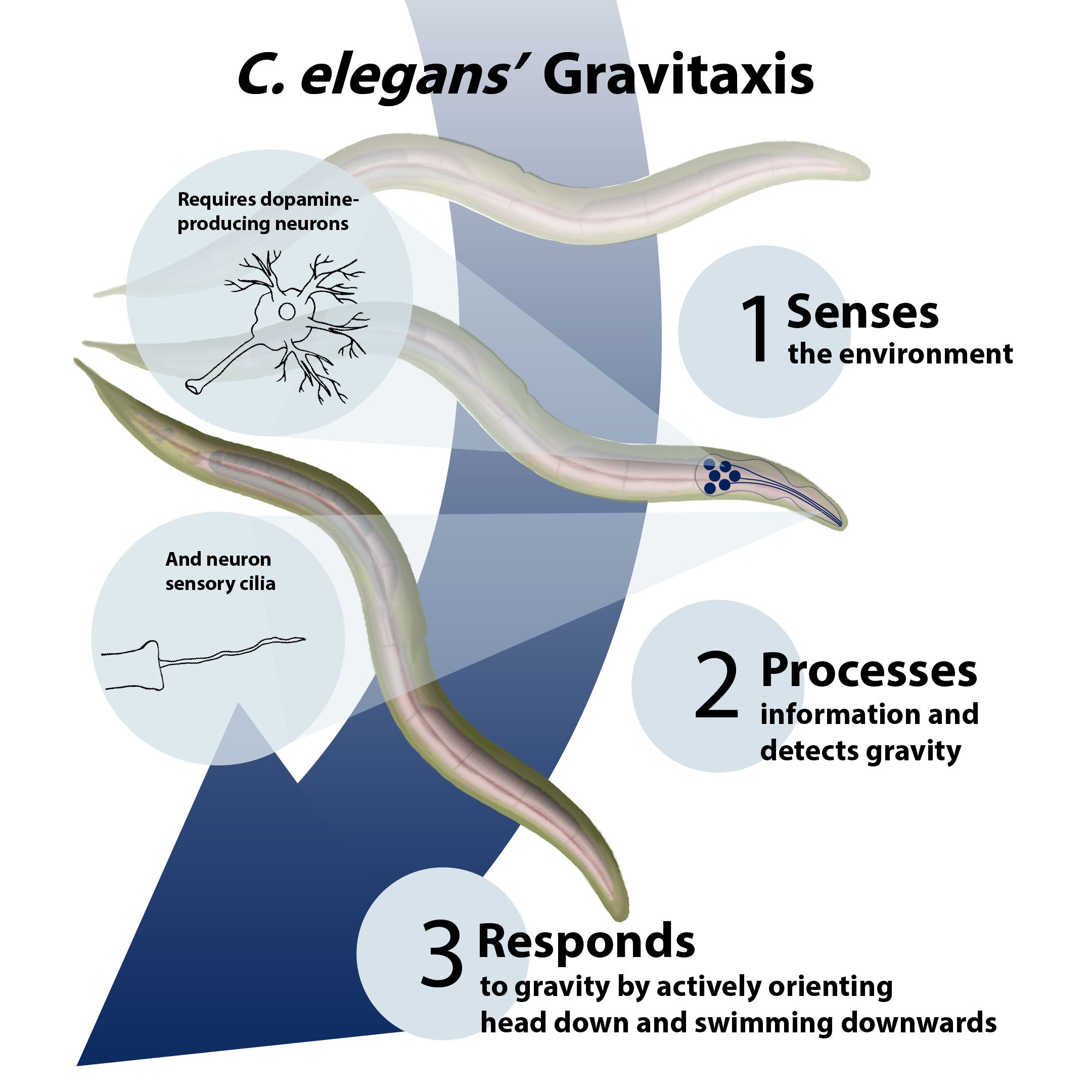While humans rely on gravity for balance and orientation, the mechanisms by which we actually sense this fundamental force are largely unknown. Odder still, the model organism C. elegans, a microscopic worm, can also sense the direction of gravity, even though there is no known ecological reason for it to do so.
To untangle this mystery and get at the fundamentals of our own sense of gravity, a team of Penn Engineering researchers led by Haim Bau, Professor in Mechanical Engineering and Applied Mechanics (MEAM), and David Raizen, Associate Professor in Neurology at the Perelman School of Medicine, conducted a series of experiments on this model organism. The lead author, Alex Chen, a then-visiting doctoral student, and co-authors, Hungtang Ko, a then-master’s student, and Oswald Chuang, a former postdoctoral fellow, contributed to this work while working in both Bau’s and Raizen’s labs.

Even with its extremely simple physiology, C. elegans shares more than half of its genes with humans, allowing genetic studies to give insight into which genes are responsible for similar traits in humans. But the idea to study the genetics of gravitaxis, or the ability to move in response to gravitational forces, arose completely by coincidence, given that the researchers did not realize the worms possessed the trait to begin with.
“We were working in previous research on hydrodynamics of C. elegans, dropping them into water, when we observed that these worms all tended to swim towards the bottom of the cuvette,” says Bau. “We wondered if they were responding to gravity or just top-heavy and passively sinking.”
Recognizing this as an opportunity to pinpoint molecular pathways responsible for gravitaxis, the team initiated the study, which was published in the journal BMC Biology.
“C. elegans are especially amenable to genetic manipulation; we can turn genes on and off to tell us about their function and then apply that knowledge to human genes because these molecular mechanisms are preserved in the animal kingdom,” says Bau.
Experiments with aqueous solutions both less dense and denser than the worm itself were used to test its ability to detect gravity.
“In a matter of seconds, the worms tilted downward and swam in the direction of gravity’s pull,” says Bau. “Seeing that the response was active and not just passive sinking, we then tested other variables including the presence of sensory cilia and intact dopaminergic neurons.”
To begin to identify the mechanism by which worms respond to gravity, the researchers first disrupted the function of sensory cilia, which are cellular structures specialized for sensory functions such as taste, smell and temperature. Without these cilia, the worms no longer swam in the downward direction; they no longer oriented to gravity. The researchers then found that worms lacking the neurotransmitter dopamine, or the receptors that respond to dopamine, also lacked the ability to detect gravity.
“We test genetic variables to both determine those responsible for a function and to discount those that may confound our results,” says Bau. “When turning genes on and off in the many mutations of C. elegans, we start with a hypothesis of gene function that comes from what we know about certain genes, and in this case, we know dopamine is a very common neurotransmitter that controls many functions in the body. When we turned it off in mutants, the ability to detect gravity was lost.”
“Interestingly, when worms were exposed to dopamine supplements at the larval development stage and later, in the solution, some of that ability came back, indicating that pharmaceutical recovery may be possible,” he says.
This connection between dopamine and gravity sensing provides insight into applications for human health.
“The stage of our research is fundamental and the application to human health is still a long distance away,” says Bau. “However, there are certainly applications of this study beyond scientific curiosity. Our results do support future research in gravity sensing in humans, especially older individuals who are prone to falling, and potentially finding cures for those conditions.”
For example, individuals with Parkinson’s disease, in which dopamine neurons are defective, are prone to frequent falls, perhaps due to a defect in gravity sensing. Understanding how dopamine contributes to gravity sensing in worms may therefore have relevance to understanding its function in humans.
